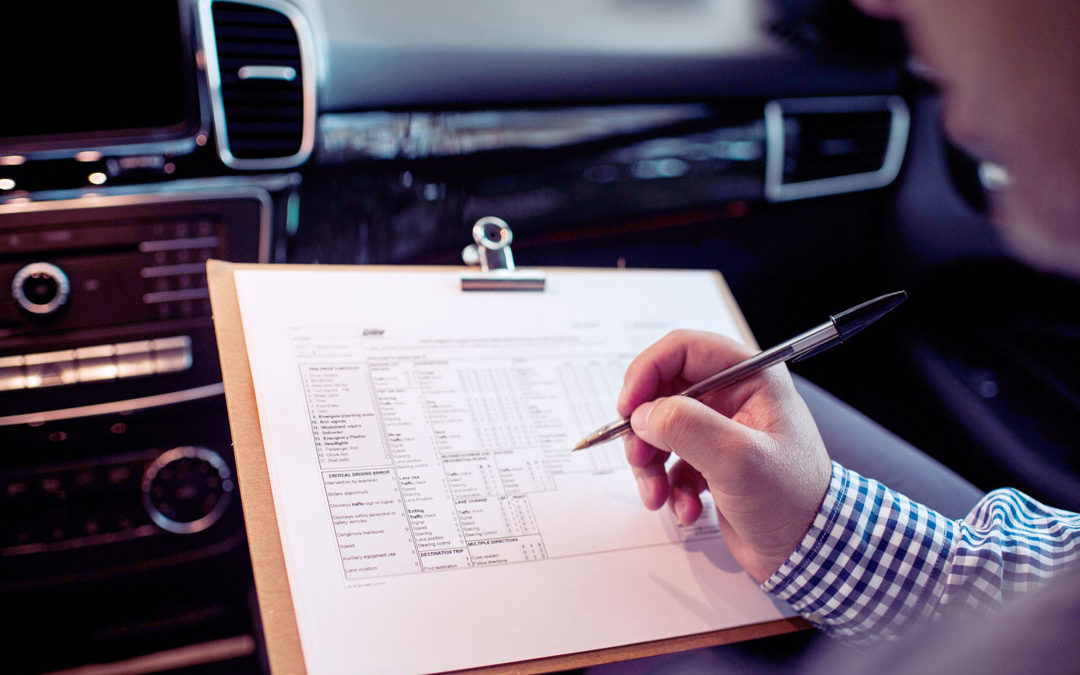California DMV Drive Test | Part 2
Written By | Doreen Almirol | 20+ years CA DMV Licensed Driving Instructor
Welcome to our comprehensive guide on acing the DMV drive test! In this guide, we’ll break down the scoring criteria used by DMV examiners to evaluate your driving ability. Understanding these criteria is essential for success in passing the DMV drive test.
See Driving Perfomance Evaluation Score Sheet sample to follow along with our guide. (Provided by California DMV)
BACK: DMV Drive Test: Check In & Vehicle Inspection | Part 1
This blog may contain affiliate links, and if you make a purchase through these links, we may or may not earn a commission at no extra cost to you.
DRIVING TIPS: Traffic Checks
It is important that all drivers understand the phrase “traffic check”. It is both the observation of vehicle & pedestrian traffic, from all directions, and the proper reaction to the traffic, sometimes that means SLOW DOWN & STOP. It is observed and evaluated by the examiner in every action.
1 | Parking Lot Driving

Drivers will be tested twice on Parking Lot Driving.
The first time, drivers must follow the examiner’s instructions to exit the DMV parking lot to start the test. The second time, drivers must follow the examiner’s instruction to enter back into the DMV parking lot, drive to a designated area and park the vehicle to end the test.
Traffic Checks
- Observe traffic (vehicles, bicyclists, and pedestrians) in all directions. Scan for this traffic ahead, behind , and to the left and right of you.
- Yield the right-of-way to vehicles, bicyclists, and pedestrians when necessary for safety.
- React Safely to traffic situations. STOP COMPLETELY for pedestrians crossing in front of your car and other cars backing out of parking spaces in front of you.
Speed
- Drive at a safe speed and maintain control of the vehicle. Usually a safe speed is 5-7 mph, depending on the size of the parking lot and how busy it is with traffic.
2 | Business/Urban and Residential/Rural Driving

During the drive test, drivers will be evaluated while driving in a straight section of a business district and a residential area.
Traffic Check
- Observe traffic for hazards: Ahead and behind you. To the left or right.
- React safely to traffic situations: traffic at entrances to roadways, pedestrians and bicyclists, and/or vehicles parking.
Speed
- Maintain the appropriate speed limit without exceeding the speed limit.
- Slow for hazards or obstructions.
Spacing
- Maintain a safe distance to the front and sides of your vehicle.
PRO DRIVER TIPS:
For every 10 mph you’re driving, give yourself about a car length distance from the car in front of you. Example: 30 mph = 3 car lengths distance
Lane Position
- Keep the vehicle in the center of the lane.
3 | Intersections

Drivers will be tested on driving through eight Intersections.
Specific scoring criteria is used depending on how the driver crosses the intersection. Crossing the intersection straight THROUGH or STOPPING and STARTING are the 2 types of intersections.
When crossing Through Intersections, the examiner will apply the following Through Intersections criterias to evaluate your driving:
When Driving THROUGH Intersections
- Observe traffic (vehicles, bicyclists, and pedestrians) in all directions. Scan for this traffic ahead, behind , and to the left and right of you.
- Maintain appropriate speed.
PRO DRIVER TIPS:
Driving 10 mph over or under the posted speed limit, unless justified by road/traffic/weather conditions, will be scored as a Critical Driving Error, automatic FAIL.
- Yield the right-of-way to vehicles, bicyclists, or pedestrians when necessary for safety.
- Do NOT make unnecessary stops. Do not stop unless required by another vehicle, bicyclist, or pedestrian, traffic sign, signal, or to avoid a collision.
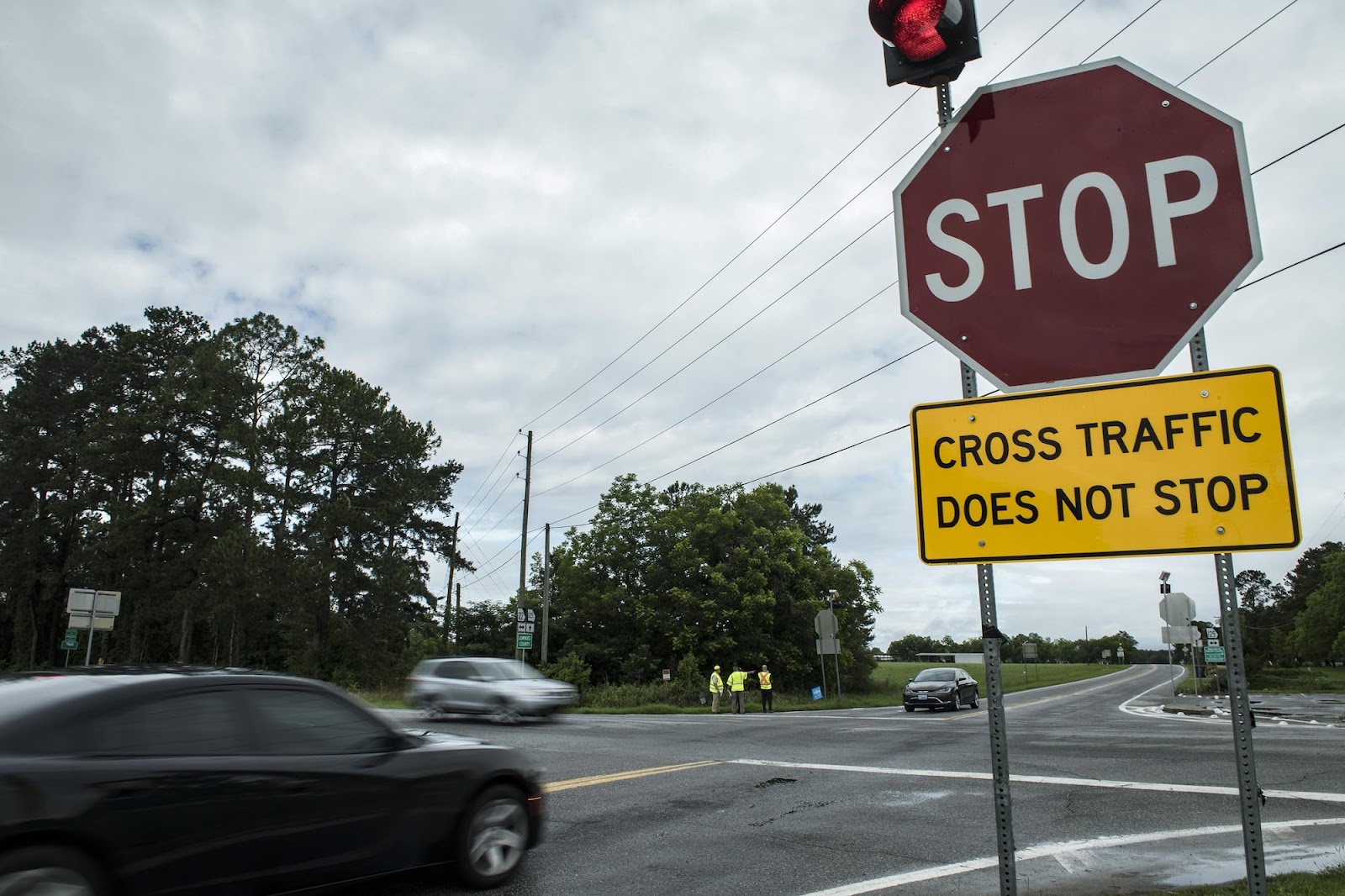
When crossing Stop Intersections, the examiner will apply the following Stop & Start Through Intersections scoring criteria to evaluate your driving.
When Required to STOP at an Intersection:
- Observe traffic (vehicles, bicyclists, and pedestrians) in all directions. Scan for this traffic ahead, behind , and to the left and right of you.
PRO DRIVER TIPS:
This may be indicated by looking over your left or right shoulder, and using your mirrors as appropriate.
- Decelerate and brake smoothly. Depress the brake pedal without depressing the accelerator (gas pedal) at the same time.
- Come to a full stop without unnecessary movement forward or roll backward. Maintain proper gap from the car in front of you and stop within specified limit lines.
- For proper gap, ensure you are able to see the rear wheels of the vehicle in front of you or have enough room to move around the vehicle without backing up.
- At limit lines, stop within 6 feet (about half-a-car length) BEHIND the limit line. From the corner of the intersection if there is no limit line.
- Stop without the front-most part of the vehicle: in an intersection, over the limit line, beyond the sidewalk or stop sign.
When STARTING Through an Intersection:
- Observe traffic (vehicles, bicyclists, and pedestrians) in all directions. Scan for this traffic ahead, behind , and to the left and right of you. Look toward other vehicles, bicyclists, and pedestrians when necessary. React safely to traffic situations.
PRO DRIVER TIPS:
This may be indicated by head and/or eye movement to the left and right as appropriate.
- Yield the right-of-way to vehicles or pedestrians, when necessary for safety. But also know how to accept the right-of-way: without causing confusion or impeding traffic flow and when it is safe to start.
- Accelerate smoothly.
4 | Turns
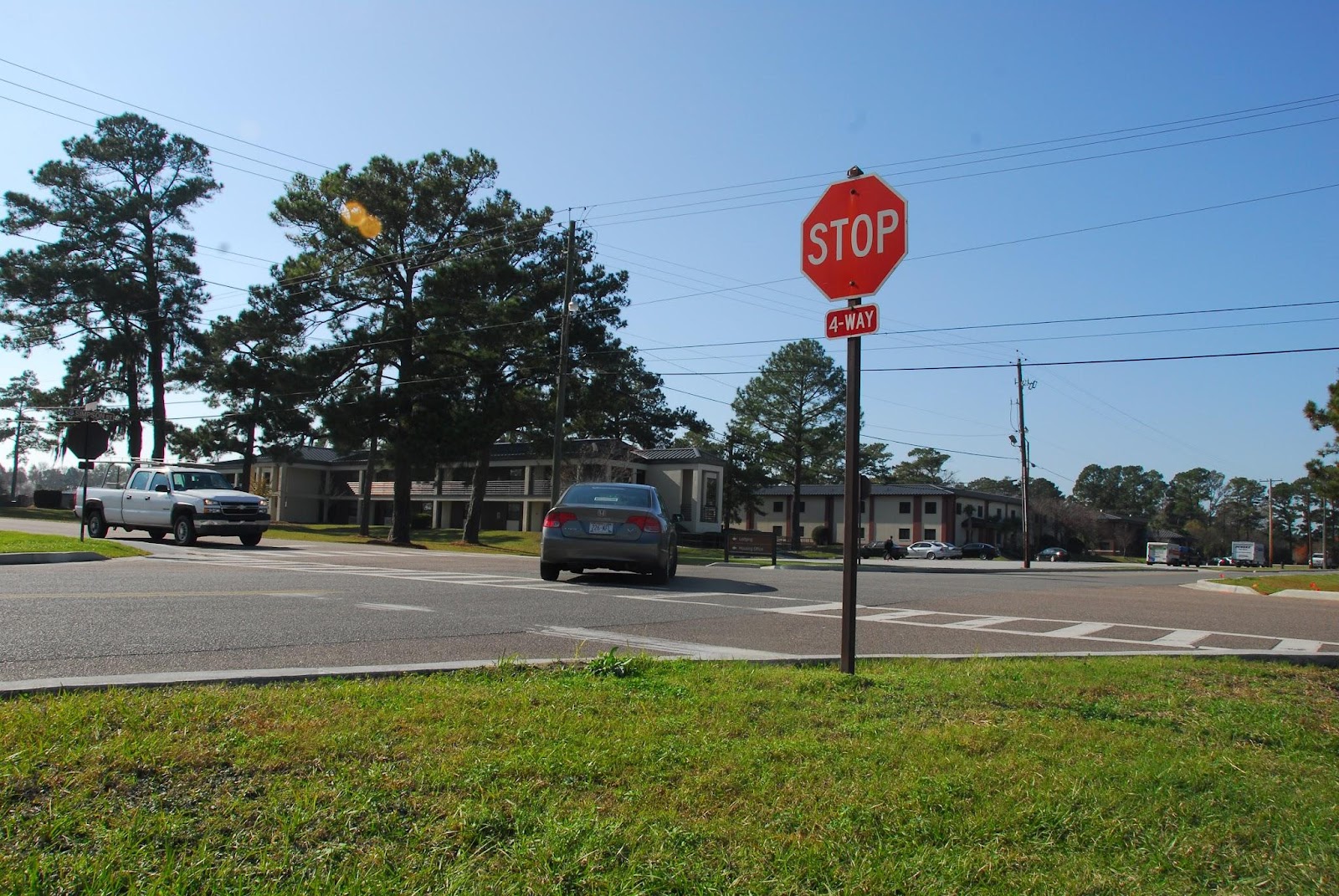
During the drive test, drivers will be evaluated on completing FOUR LEFT Turns and FOUR RIGHT Turns. Complete smooth and safe turns.
Approaching the Intersection
- Observe traffic (vehicles, bicyclists, and pedestrians) in all directions. Scan for this traffic ahead, behind , and to the left and right of you. Check the blind spot by looking over your right or left shoulder before merging into the bike lane or center left turn lane. Look toward other vehicles, bicyclists, and pedestrians when necessary. React safely to traffic situations.
- Activate the turn signal at least 100 feet prior to the turn, but not so early that other drivers will not understand your intentions. 100 feet is equivalent to approximately 6 car lengths.
- Decelerate and brake smoothly. Do not depress the brake and accelerator (gas pedal) at the same time.
Yield
- Yield the right-of-way to vehicles, bicyclists, or pedestrians when necessary for safety.
Lane Use
- Use designated lanes for turns.
- Right turns: enter the bike lane within 200 feet of the turn, enter the designated right turn lane at the opening, or use the right-most part of the right lane.
- Left turns: enter the two-way center left turn lane within 200 feet of the turn and do not violate the right-of-way of any vehicle already in the lane, enter the designated left turn lane at the opening, or use the left-most part of the left lane.
- Stay within lane markings.
- Avoid unnecessary stops. Do not stop unless required by another vehicle, pedestrian, bicyclist, traffic sign, or signal.
When Required to STOP before making TURNS:
- Observe traffic (vehicles, bicyclists, and pedestrians) in all directions. Scan for this traffic ahead, behind , and to the left and right of you. Look toward other vehicles, bicyclists, and pedestrians when necessary. React safely to traffic situations.
PRO DRIVER TIPS:
This may be indicated by looking over your left or right shoulder, and using your mirrors as appropriate.
- Decelerate and brake smoothly. Depress the brake pedal without depressing the accelerator (gas pedal) at the same time.
- Come to a full stop without unnecessary movement forward or roll backward. Maintain proper gap from the car in front of you and stop within specified limit lines.
- For proper gap, ensure you are able to see the rear wheels of the vehicle in front of you or have enough room to move around the vehicle without backing up.
- At limit lines, stop within 6 feet (about half-a-car length) BEHIND the limit line. From the corner of the intersection if there is no limit line.
- Stop without the front-most part of the vehicle: in an intersection, over the limit line, beyond the sidewalk or stop sign.
While Turning/Completing Turns
- Observe traffic (vehicles, bicyclists, and pedestrians) in all directions. Scan for this traffic ahead, behind , and to the left and right of you. Look toward other vehicles, bicyclists, and pedestrians when necessary. React safely to traffic situations.
- Yield the right-of-way to vehicles, bicyclists, or pedestrians when necessary for safety. But also know when to accept the right-of-way, without causing confusion or blocking traffic flow, and when it is safe to start.
PRO DRIVER TIPS:
Most common yield intersections drivers should understand right of way rules and frequently practice yielding at: 2-way stops, right turn on red light, left turn yield at green light and uncontrolled intersections in residential areas.
- Maintain proper steering control and lane position. Turn the steering wheel smoothly and with full control of the vehicle, with only the necessary amount (do not over or under-steer).
- Avoid making wide/short turns. Keep the vehicle within the lane or lane markings.
- Correct lane. End the turn in the proper lane. You begin and end in the appropriate lane for multiple turn lanes.
- Speed: Maintain a smooth, safe speed and keep control of the vehicle. Do not make unnecessary stops during the turn. Accelerate smoothly after the turn.
- Signal: cancel the turn signal upon completion of the turn.
5 | Lane Change
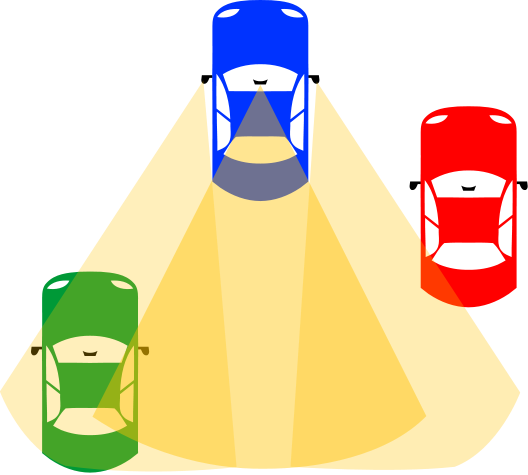
During the drive test, drivers will be evaluated while performing one LEFT Lane Change and one RIGHT Lane Change.
Traffic Check
- Observe traffic (vehicles, bicyclists, and pedestrians).
- Left lane change, look to the left, behind you, and at your left side blind spot (check your left hand mirror and look over your left shoulder).
- Right lane change, look to the right, behind you, and at your right side blind spot (check your right hand mirror and look over your right shoulder).
- React safely to traffic situations.
Signal
- ACTIVATE turn signals appropriately, before making a lane change.
- CANCEL turn signal after maneuver is complete and all 4 tires have entered the new lane.
Speed
- Use an appropriate speed.
- Change lanes without exceeding the speed limit.
PRO DRIVER TIPS:
It is not always necessary to slow your speed before a lane change.
Spacing
- Wait for an adequate gap.
- Create a safe distance to the front, sides, and rear of vehicles moving in the same direction.
- Create a safe distance in front of your vehicle after a lane change.
Steering Control
- Change lanes smoothly.
- Move to the center of the lane.
6 | Curb Parking and Backing
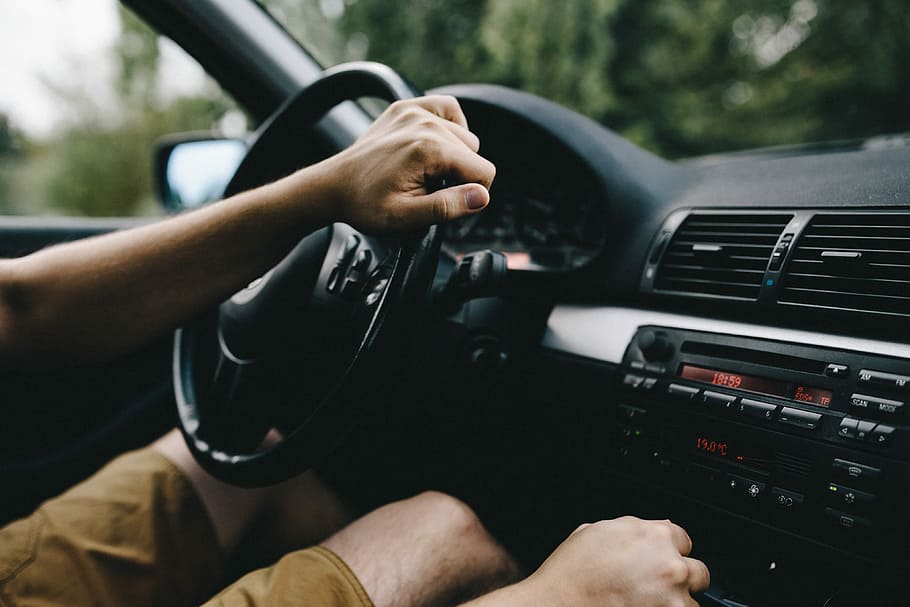
At some point of your drive test, the examiner will give you instructions to ENTER the curb, BACK UP, and EXIT the curb. This maneuver is performed on a street that is on a flat surface and straight curb. You are asked to enter the curb with the FRONT of your vehicle. (NOTE: This is NOT parallel parking by backing into a spot.)
Traffic Checks
- Observe traffic when entering or exiting the curb, observe traffic while entering or exiting: Ahead and to the right before entering and the left before exiting, and then behind you. Check appropriate blind spots.
PRO DRIVER TIPS:
This is indicated by looking over your left or right shoulder, and using your mirrors as appropriate.
- While backing up your car, look over your right shoulder toward other vehicles, bicyclists, and pedestrians when necessary and react safely to traffic situations.
Signal
- ACTIVATE turn signal before entering or exiting the curb.
- CANCEL turn signal after entering or exiting the curb.
Speed
- Decrease speed when entering the curb and increase speed when exiting the curb.
- Maintain a smooth, safe speed while backing up. Maintain control of the vehicle and proper gear use, reverse.
Parallel
- Back up in a straight line for 3 vehicle lengths while remaining within 3 feet of the curb.
PRO DRIVER TIPS:
Turn your head over your right shoulder or look through the right-side rear view mirror. This will help you back up in a straight line. Technology, such as backup cameras and self-parking, cannot be used on a driving test.
Control
- Maintain control of the vehicle (includes proper gear: reverse).
- Maintain the speed and steering while backing up.
Avoid These CRITCAL MISTAKES on your Drive Test!
Pass the driving test with ease by mastering the scoring criteria. Practice diligently, stay vigilant with traffic checks, and prioritize safety above all.
Avoid making Critical Driving Errors by reviewing them thoroughly before your test. Your journey to a confident and successful drive starts with preparation.

